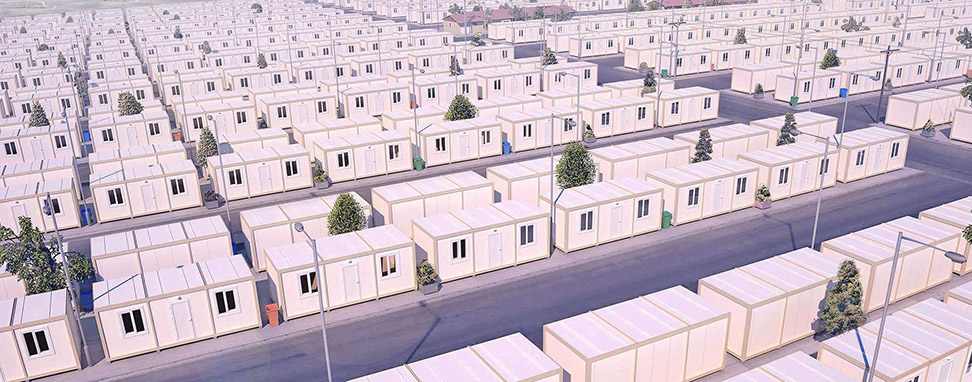Insulating and climate-controlling a flatpack container house is crucial for ensuring comfort, energy efficiency, and durability. Here’s a comprehensive look at how these aspects can be effectively managed:
Insulation
1. Spray Foam Insulation
Application: Applied directly to the interior walls, ceiling, and floor.
Benefits: Provides excellent thermal insulation and seals gaps to prevent air leaks. Closed-cell spray foam also adds structural strength and moisture resistance.
2. Rigid Foam Insulation
Application: Installed on the interior or exterior walls, ceiling, and floors.
Types: Expanded Polystyrene (EPS), Extruded Polystyrene (XPS), and Polyisocyanurate (Polyiso).
Benefits: High R-value per inch, moisture-resistant, and provides a continuous insulation layer that minimizes thermal bridging.
3. Fiberglass Batt Insulation
Application: Placed between studs in walls, joists in the ceiling, and rafters.
Benefits: Cost-effective and easy to install. Offers good thermal insulation and soundproofing.
4. Blanket (Batt and Roll) Insulation

Application: Suitable for walls, floors, and ceilings.
Benefits: Available in various thicknesses and widths to fit standard framing dimensions. Relatively easy to install.
5. Reflective or Radiant Barriers
Application: Often used in addition to other types of insulation, especially in hot climates.
Benefits: Reflects radiant heat away from the living space, improving thermal comfort and reducing cooling costs.
Climate Control
1. Heating, Ventilation, and Air Conditioning (HVAC) Systems
Mini-Split Systems
Application: Ductless systems consisting of an outdoor compressor and indoor air-handling units.
Benefits: Energy-efficient, allows for zoned heating and cooling, and easy to install.
Central HVAC Systems
Application: Suitable for larger or more complex container house setups.
Benefits: Provides consistent heating and cooling throughout the home. Requires ductwork but offers high efficiency and control.
Window or Portable AC Units
Application: Useful for small spaces or temporary climate control solutions.
Benefits: Low upfront cost and easy installation. Portable units offer flexibility.
2. Radiant Floor Heating
Application: Installed under the flooring material.
Benefits: Provides consistent, even heating throughout the space. Energy-efficient and enhances comfort by warming the floors.
3. Ventilation Systems
Mechanical Ventilation
Types: Exhaust fans, supply fans, and balanced systems like Heat Recovery Ventilators (HRVs) or Energy Recovery Ventilators (ERVs).
Benefits: Ensures good indoor air quality by expelling stale air and bringing in fresh air. HRVs and ERVs improve energy efficiency by recovering heat from outgoing air.
Natural Ventilation
Application: Strategic placement of windows, vents, and doors to promote airflow.
Benefits: Reduces reliance on mechanical systems and enhances indoor air quality.
4. Insulated Doors and Windows
Double or Triple Glazed Windows
Benefits: High thermal insulation, reduces heat loss in winter and heat gain in summer, and improves soundproofing.
Insulated Exterior Doors
Benefits: Prevents drafts and enhances energy efficiency. Often includes weatherstripping to seal gaps.
Additional Considerations
1. Thermal Mass
Application: Using materials that absorb, store, and release heat slowly, such as concrete floors or interior brick walls.
Benefits: Helps to stabilize indoor temperatures by reducing temperature fluctuations.
2. Sealing and Weatherproofing
Application: Using caulking, weatherstripping, and vapor barriers to seal gaps and joints.
Benefits: Prevents air leaks and moisture ingress, which can compromise insulation effectiveness and indoor comfort.
3. Smart Home Integration
Application: Installing smart thermostats and climate control systems.
Benefits: Enhances energy efficiency and comfort by allowing precise control over heating and cooling.
By combining effective insulation materials with advanced climate control systems, flatpack container houses can achieve high levels of comfort, energy efficiency, and sustainability. Proper installation and integration of these elements are key to ensuring optimal performance and longevity of the container house.








